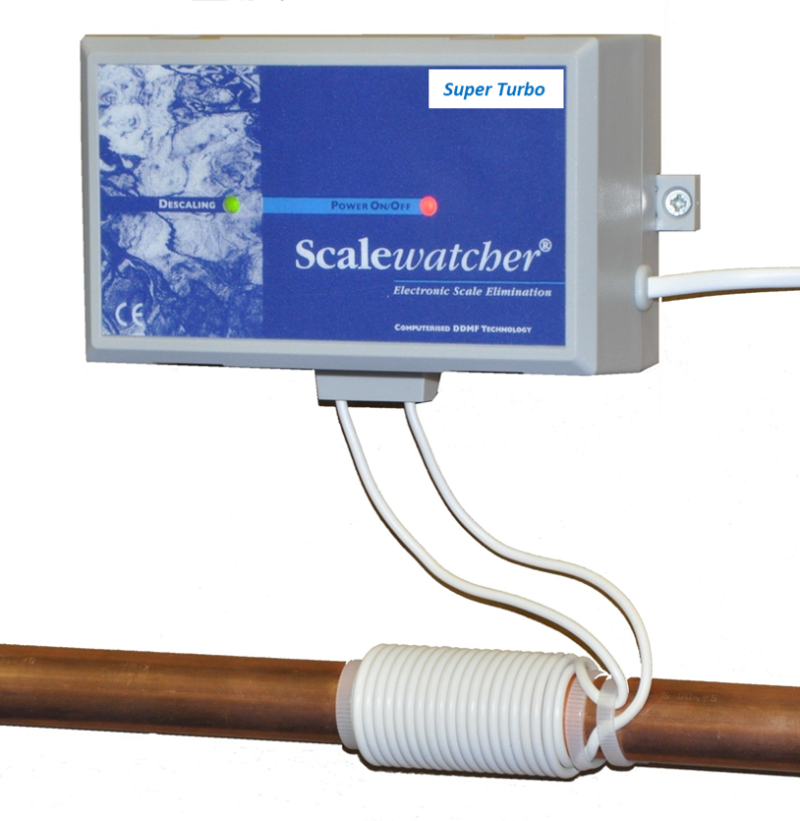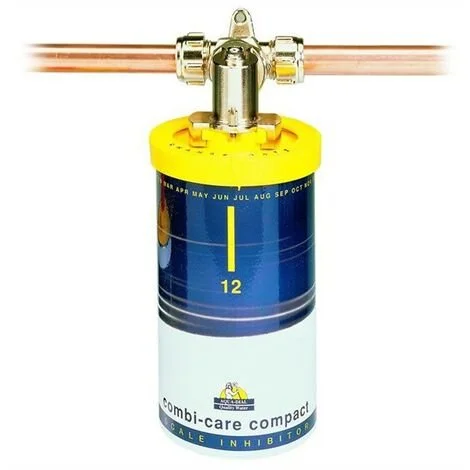Common “Softening” Alternatives — And Why They Fall Short
Here are some of the most common devices marketed as water softeners — but which, in truth, don’t deliver genuine soft water.
1. Magnetic or Electronic Scale Reducers
Electronic?
Often seen in new house as a tick boxing exercise. 0/10
These are usually a coil of wire or a clamp-on magnet around your pipe that claims to use a magnetic or electrical field to "alter" the minerals.
However, they do not remove calcium or magnesium ions. The minerals remain dissolved in your water.
As Dorset Water Softeners warn, these may not live up to the scale-removal or softening claims. dorsetwatersofteners.com+1
Evidence for their real-world effectiveness is limited — they may help marginally with scale under certain conditions, but they’re not a substitute for ion-exchange softening. asclyziarskyklub.sk+1
Heavily Promoted
To architects and specifiers but yet again no customer we have visited has been satisfied with the water. Very Expensive.0/10
2. Polyphosphate Dosing Systems
These systems release polyphosphate chemicals into the water, which can temporarily interfere with scale formation.
But crucially, they don’t remove the hardness minerals — calcium and magnesium remain in the water.
This means scale potential isn’t truly eliminated in the long term, just “delayed.”
According to Dorset’s FAQ, the only way to fully remove hardness is with a salt-based (ion-exchange) softener. dorsetwatersofteners.com
Chemical Dosing
Stops the combi blocking but leaves the shower looking white 5/10
3. “Salt-Free” or Super-Resin Blends
Some devices marketed as “salt-free softeners” use special resins, filters, or even “structured water” technology.
These typically use very little (or no) salt — but that doesn’t mean they actually soften.
In many cases, they’re water conditioners: they alter the form of the minerals (for instance, turning them into micro-crystals) so scale may form more slowly or be less sticky. But they don’t remove hardness ions.
Dorset Water Softeners explicitly call out such systems as misleading — when pressed for proof, many of these companies can’t back their softening claims. dorsetwatersofteners.com
Some of these devices also struggle to regenerate properly or last long-term, and users often call traditional softener providers later, complaining that scale has returned.
Magic Beans
These often have a small quantity of scale removing resin. About enough for a weeks worth of soft water. After that back to HARD. 1/10
Why These Alternatives Don’t Give the Same Benefits
Because they don’t remove hardness:
You may still get scale in appliances over time.
You won’t see the full soft-water feel: less soap scum, smoother skin, and better lathering may not materialise.
There’s no ion-exchange regeneration — so they can’t truly “clean out” the hardness minerals.
The long-term performance is often less reliable than a tried-and-tested ion-exchange softener.
What Really Works: Ion-Exchange Salt-Based Softeners
A true water softener, like the ones we install at Dorset Water Softeners, uses an ion-exchange resin to removecalcium and magnesium ions, replacing them with sodium (or potassium) ions. dorsetwatersofteners.com
When the resin becomes saturated, it regenerates using a salt brine: this is how the hardness minerals are washed away and the resin is renewed. dorsetwatersofteners.com+1
This process actually softens the water, delivering the full benefits: less scale, better soap performance, gentler skin, and longer-lived appliances.
Real Customer Risks of Choosing the Wrong System
If you rely on a non-softening device, you may think you've “fixed” hard water — but later realise scale is still damaging your system.
Because softeners are a long-term investment, picking something unreliable can lead to frustration, repeated spending, or even damage in your plumbing.
Maintenance or service for “gimmick” systems may not be as developed, and warranty or backup support may be weak.
How to Spot Devices That Aren’t True Softeners
Here are some red flags when you’re evaluating water treatment sales pitches:
Vague Claims: If a device says it “reduces scale” but doesn’t explicitly mention removing calcium or magnesium, that’s a warning sign.
No Details on Regeneration: Real softeners need a regeneration cycle. If a device never mentions that, it may not be doing ion exchange.
Salt-Free Marketing: “Salt-free softener” often equals “conditioner, not softener.” Ask exactly how the device works.
Lack of Testing Proof: Ask for water-hardness before vs after the device is installed. If they can’t show a drop in hardness, they’re not softening.
No Local Support: If the company that sells it doesn’t provide long-term service or local engineers, you may be left stranded when the device underperforms.
Final Thoughts: Don’t Be Fooled by “Softening Gadgets”
Alternative devices can sound very attractive — especially if they’re cheaper, lower maintenance, or salt-free.
But if your goal is to actually soften water, only ion-exchange (salt-based) softeners deliver proven, long-term results.
As Dorset Water Softeners emphasises, these alternatives are often sold with overpromising claims. dorsetwatersofteners.com+1
Take your time, ask questions, and choose a treatment solution that matches your real water needs, not just flashy marketing.




